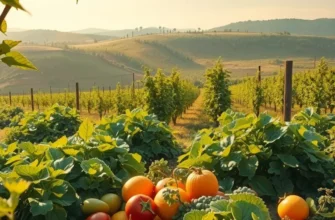Exploring a seasonal vegetarian diet offers exciting flavors and a deeper connection to food. This approach prioritizes fresh, local produce, which can enhance your meals while promoting sustainability. Understanding the seasonal availability of ingredients makes it easier to create nutritious and delicious vegetarian dishes. As we delve into this approach, you’ll learn how aligning your diet with the seasons can elevate your culinary experience and contribute to a healthier lifestyle.
The Foundations of Seasonal Eating

A seasonal vegetarian diet embraces the natural rhythm of the earth, prioritizing fruits and vegetables that peak at different times of the year. This approach to eating not only differentiates itself from conventional vegetarianism, which may rely on out-of-season produce, but also emphasizes harmony with the environment.
The philosophy of seasonal eating is rooted in the belief that food should be consumed when it is harvested at its prime. Consuming seasonal produce often results in enhanced flavor and nutrition. For instance, tomatoes picked in the height of summer are fragrant and deeply flavored, while those available in winter may lack zest. From a nutritional standpoint, local seasonal produce doesn’t require long storage or transport times, allowing nutrients to remain intact.
Environmentally, eating seasonally reduces the carbon footprint. Transporting food from far-off regions consumes significant resources. By choosing produce that aligns with the local agricultural calendar, individuals can support eco-friendly practices and local farmers. You can further explore strategies for reducing food waste at home to complement sustainable eating.
The cycle of seasons offers a varied palate of produce. In spring, fresh greens like asparagus and peas rejuvenate the senses. As summer arrives, vibrant berries, zucchinis, and peppers hit their stride, providing a fresh and juicy bounty. Autumn invites the warmth of root vegetables like sweet potatoes and squashes, along with apples and pears. Winter, though sparing, presents hearty fare with cabbages, Brussels sprouts, and citrus fruits bringing brightness to the cold months.
Understanding which fruits and vegetables thrive in different seasons is a key aspect of harnessing nature’s gifts. Here’s a brief guideline to inform your shopping and culinary habits:
- Spring: Embrace fresh and tender produce, such as spinach, radishes, and strawberries.
- Summer: Tomatoes, cucumbers, and corn come into play, offering cooling and hydrating options.
- Autumn: Root vegetables and pumpkins, along with tart cranberries, are perfect for harvesting.
- Winter: Kale, oranges, and parsnips provide sustenance during the colder months.
With this approach, the planning of meals can evolve with the seasons, making each dining experience unique and harmonious. This not only supports the body’s nutritional needs throughout the year but also enhances the appreciation of food’s natural diversity.
Final words
Transitioning to a seasonal vegetarian diet not only supports health but also fosters a deeper appreciation for nature’s cycles. By choosing ingredients in season, you can enjoy fresher flavors and higher nutritional value while supporting local farmers and reducing your carbon footprint. This mindful approach to eating encourages creativity in the kitchen and inspires a commitment to sustainability. As you experiment with seasonal recipes, you’ll likely discover new favorites and a renewed passion for cooking that celebrates the bounty of each season. Embrace this culinary journey and savor the changing tastes throughout the year.








